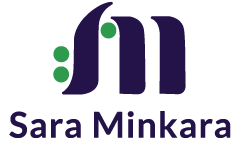The Beauty of Blind Photography
I love photography and I’m blind. Yes, you read that right!
You might be asking yourself why I care about photography when I am blind. The answer is simple: sensory photography.
According to Photography As A Social Practice,“the core of sensory photography is about using all the senses, not just sight, to photograph.”
The Blind Photographer is a photography book that I came across that showcases the work of more than 50 blind or partially blind photographers from all around the world. It highlights the world of sensory photography and how that process opens doors for both the sighted and non-sighted individuals. It forces individuals to address their visual prejudices and see vision beyond sight.
From a technical lens, yes photography is a visual art. But as a blind person, my focus isn’t on the aperture, exposure, or shutter speed; it’s laughter, energy, and how things feel. Photography for me is about capturing moments and how I view them. One perfect example of this is when I was with my friend Hana taking pictures. I could hear this powerful sound of rapid, running water, and immediately started clicking away. While I thought I was capturing this magnificent waterfall, Hana turned to me and said “Sara, it’s a sewage pipe, move on!” While I wasn’t able to highlight the beauty of the tremendous waterfall that was in my mind, it is a memory, and a comedic one at that, I can cherish for a lifetime.
Despite my waterfall fail, there have been moments where I capture beautiful images. I remember traveling for ETI with my friend, Nicolette. We were joking around, passing time, and she started laughing.
Click, click, click.
I captured the most wholesome moment of all, someone’s genuine laughter. Many photos today get lost on social media, the filters, and the editing. Being able to capture authentic, genuine moments, with no fear of how people will perceive it is rare.
This is why I always say my blindness is a strength. The lack of sight has given me more vision. It allows me to be present and be my most authentic self. Not to say that the visual world doesn’t have amazing things to offer, and that we should all be blind, but exercising mindfulness and questioning whether we’re being our most authentic selves. If not, why not?
So, in honor of May being Photography Month, I challenge each of you to capture those authentic moments and not just the staged or posed events. Close your eyes, Listen to the sounds around you, feel the wind and sun, smell the flowers, open your heart, and push the button. See what happens.
Sensory photography is a way for me to be my most authentic self and capture that in the world around me. It’s my truth.
Follow my Instagram (@sarasminkara) to view some of my photos!
Impact of COVID19 on Disability Employment
COVID19 has affected everyone. The impact varies by person and place, but it’s reach is undeniable. Some people have managed not only to survive, but to thrive, while others are suffering. The reality is that COVID has exacerbated many of the inequities already present within our society; in the context of how it specifically impacts labor, covid has disproportionately affected those who have historically contended with significant barriers to employment, including people with disabilities.
The pandemic has made it more difficult for PWDs to retain employment, including but not limited to the increased risk for severe illness that COVID19 poses to us. According to the Office for National Statistics (ONS) in the UK, 21.1 per thousand employees with disabilities have been made inessential, compared to 13.0 per thousand employees without disabilities during this pandemic. According to another study, experts estimate that adults with intellectual developmental disabilities are three times more likely to die of COVID19, if infected. These are serious matters of life, death, and livelihood.
A curious dimension of the COVID19 adjustment has been the proliferation of remote work arrangements. Necessity bred widespread flexibility, which has been bittersweet for many PWDs. For years, PWDs have been under- and unemployed because of a lack of flexible and remote work opportunities. We were flatly told that it was simply not possible to accommodate our needs in this manner, yet somehow, it became possible for a wide-scale transition to remote arrangements to take effect in extremely short order when nondisabled workers also required accommodation; suddenly, the value of remote work and flexibility could be recognized. Yet somehow, PWDs continue to suffer unequal treatment.
According to Telework After COVID: A “Silver Lining” for Workers with Disabilities?, PWDs earn less on average than their peers, with those working from home facing the most significant wage gaps. And PWDs are more likely to be placed in lower-wage remote positions compared to their nondisabled peers. Disability still handicaps our potential and our opportunities, not because we are disabled, but because others can’t see past our disabilities. If this bias can be acknowledged and the disparity addressed, employers will discover that home-based workers with disabilities are a valuable labor pool for re-imagined jobs, and PWDs will have access to more, and more meaningful, professional opportunities.
As we transition from the “new normal” to “life post COVID,” with some offices reopening and economic and workforce recovery plans being implemented, it is critical that the needs of people with disabilities are deliberately considered and integrated at every stage. Not only do we deserve access to work and the independence that brings, but with 20% of all people living with disability, there is a significant source of untapped talent available to strengthen our economic outlook. Inclusion is the right thing to do for so many reasons. With this chance to rebuild, let’s finally take a truly inclusive approach.


